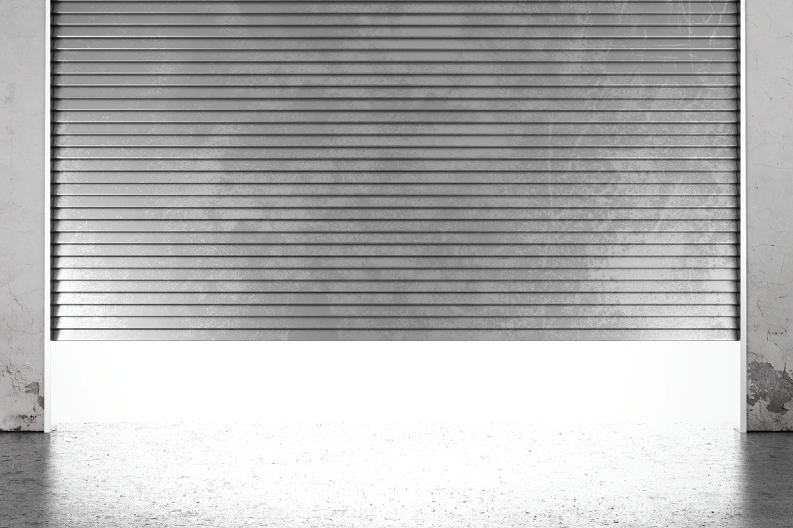
The industrial marketplace, after a pandemic-induced run-up in activity, is at last starting to slow down. But a slowdown does not always mean a slump, and normalization is the watchword as sales and construction activities retreat to pre-COVID-19 levels.
As Colliers reports in “Supply-Side Pressure Weakens the Industrial Market Back to Normal,” there are two ways to look at current market dynamics. We can view it as signs of weakness. But, “Another way to look at the data . . . is that the market is returning to normal.”
Of course, there are not-so-normal drivers of the current state of industrial affairs. The decrease in capital movement has also been the upshot of the Federal Reserve’s repeated and record-breaking anti-inflationary interest rate hikes over the past year and a half, most recently in July. (A further increase is rumored for later this year.) Commercial Search reports that, “As capital has become scarcer and more expensive, industrial construction starts and sales have slowed.”
But even though sales volume has pumped the breaks, average pricing has not submitted yet to downward pressures. In fact, the national average price tag has increased a bit, from $124 per square foot last year to $131 per foot this year. This despite a dramatic reduction in transaction volume. Two years ago, at the height—or depth—of the pandemic, the industrial sector, riding a wave of increased online demand and direct-to-consumer pandemic workarounds, posted sales of $128.2 billion, says Commercial Search. Last year, this dipped substantially to $98.5 billion in deals closed. Through July of this year, that number continued to shrink to less than half of last year’s performance—to only $27 billion.
“Owners are comfortable holding properties,” says Commercial Search, “especially as many of the large institutional owners in the sector are not highly leveraged and thus are not sensitive to rate increases. Meanwhile, buyers may be hesitant to pay historically high figures when capital is expensive.”
A similar tale of two dynamics is taking place between construction and leasing. The industrial market was riding an increasingly hot wave of interest from investors and developers prior to the world shutting down, so it is not surprising that we saw some 586.2 million square feet of industrial groundbreaking in 2021, and an even greater 614.5 million feet last year.
But so far this year, in the face of high material and labor costs, only 177.8 million feet have broken ground to date this year. “Now, with the increased cost of construction financing, many developers are pressing pause on projects,” says the data firm.
While sales and construction volume slow, the industrial market remains a landlord’s game to lose. In-place rents are still on the rise, up six cents per foot from June—to $7.39 in July. That is also a 7.5% jump over last year. New leases are even pricier, at $9.90 a foot--$2.51 more than the average for all leases.
Granular Differences
With all that as the national backdrop, what does performance look like when we drill down to regions? According to Colliers , the top 25 markets are centered mostly in the Midwest, and 10 of those “total 35% of the US industrial inventory.” Meanwhile the South and West regions each can lay claim to about 26% of the total stock, while the Northeast brings up the rear at 12%.
Most of these locales sustained modest vacancy increases in Q1, keeping pace with national numbers. But “five had a vacancy rate above 6%: Denver (7.0%); Milwaukee (6.7%); Indianapolis (6.5%); Memphis (6.3%); and Dallas (6.3%).”
Meanwhile, more supply-constrained markets, not surprisingly, remained drum-tight. Locales such as Greater Los Angeles, the New York City metro, South Florida, Cincinnati, and Minneapolis all posted vacancies under 3%.
In terms of new product, seven of the top 25 markets posted year-to-date increases in the supply of five million square feet or more: Dallas-Fort Worth, Greater Los Angeles, Chicago, Indianapolis, Houston, Philadelphia, and Columbus. “Each also had more than 14 million square feet under construction at the end of the first quarter,” according to Colliers.
Net absorption has taken a hit year-to-date, with only 73.8 million square feet taken up, a whopping 37.6% decrease from last year’s first quarter. On the positive side, leading the charge in net absorptions were Portland, Cleveland, Dallas-Fort Worth, Milwaukee, and Indianapolis. Only St. Louis, Seattle and Washington, DC posted “modestly negative net absorption.”
Colliers and Commercial Search are on the same page in terms of the rent growth the industrial market continues to experience. Fifteen markets posted YOY asking rents topping 15%, says Colliers, including Phoenix, Tampa Bay, Greater Los Angeles, Atlanta and Columbus. Denver and St. louis were the only two of the top 25 to decrease their rental rates.
But, not surprisingly, the day of above-market rents may soon be over. “Steady supply additions are growing vacancies in many markets,” says Colliers, “so rent growth is expected to decelerate in the coming quarters.”
All in all, resilience, especially in the top 25, is the watchword. A return to pre-pandemic performance is not a slump, and “despite economic headwinds,” says Colliers, “the outlook for industrial demand is favorable.”
# # #
ABOUT THE AUTHOR
John Salustri has covered the commercial real estate industry for more than 30 years. He was the founding editor of GlobeSt.com, and is a four-time recipient of the Excellence in Journalism award from the National Association of Real Estate Editors.